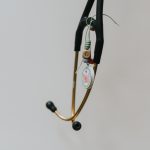Share
Medical Matters: Considerations for pan-Canadian licensure
Back to MessengerRead time: 4 minutes
By Dr. Scott McLeod, CPSA Registrar & CEO
Over the past few months, there has been a great deal of media coverage surrounding the concept of pan-Canadian licensure. Very broadly, the Canadian Medical Association (CMA) defines pan-Canadian licensure as follows:
“The ability for physicians with full licences to practise independently without restrictions or for medical resident trainees registered in any Canadian jurisdiction to practise or train in any other Canadian jurisdiction without having to acquire more than one license or pay additional licensing fees.”
In light of recent coverage, I thought this month’s Medical Matters would be a good opportunity to share my perspective on pan-Canadian licensure.
First and foremost, I’m not opposed to the concept of pan-Canadian licensure, provided the meaning and implications of such a decision are understood by all those affected. It’s crucial to note that licensure and regulation are not one and the same—a nuance many people aren’t aware of. Being granted a licence to practice is a way of verifying a physician has the credentials and the professional competencies to provide safe, high-quality care. Regulation of medicine, on the other hand, is the commitment to meet the professional standards for the jurisdiction you work in. They are often connected to each other, but they don’t need to be.
Medicine has the privilege of profession-led regulation, and with that privilege comes responsibility to the public and those elected to represent the public. Canada’s constitutional laws have delegated the responsibility for health care to the Provincial and Territorial Governments; therefore, there is an expectation that governments have some influence on who provides that care to their citizens. That is why regulatory bodies exist. Pan-Canadian licensure may standardize the acceptance of credentials demonstrating competency, but there will still be a requirement of professional commitment to the jurisdiction in which they will provide care.
The concept of pan-Canadian licensure is based on a CMA survey completed in 2022, which found strong support for pan-Canadian licensure among physicians across the country. If you’re not aware of the survey, I encourage you to look at the results. According to the survey, the overall complexity and length of the process to obtain a licence, as well as the cost of getting licensed, are the biggest obstacles when applying for an additional licence. These are valid concerns, and I understand the frustration. The question we must always come back to is, will pan-Canadian licensure fix these administrative and financial barriers or potentially make them worse?
On the surface, I think the concept of enhancing physician mobility is a good one and CPSA, along with the other Medical Regulatory Authorities (MRA) in Canada, has been looking at options pertaining to physician mobility for the past five years. Every time we think we’re making progress, we run into challenges related to the unique legislation that exists in each jurisdiction, such as differences between provincial Health Professions Acts. Although there are lots of similarities between jurisdictions, there are still sufficient differences, making licence mobility tricky. It’s not impossible, though. In fact, New Brunswick, Newfoundland and Labrador, Nova Scotia and Prince Edward Island recently launched an Atlantic Registry, allowing physicians to move between Atlantic provinces without paying locum or temporary licensing fees. This is a great step forward and one we can learn from.
Another thing to consider is the reality that pan-Canadian licensure does not increase the number of physicians in Canada, it only increases their mobility. This concerns me, because evidence shows that having continuity of care and a patient medical home enhance the safety and quality of primary care. We are already seeing fewer physicians going into full scope family medicine and I’m hearing about physicians leaving their practices to do locums, because the money and the lifestyle are attractive. Increased mobility as a result of pan-Canadian licensure could lead to fragmentation of care and make matters worse.
In addition to fragmented care, I’m also concerned about the opportunity cost of physician mobility. A scarcity of resources means that if you use a resource for one thing, you don’t have it available for another. In our case, mobility is great if you’re on the receiving end of it. If you’re on the losing end, it’s not so great.
Let’s look back at the two obstacles identified in the survey: administrative and financial. If what we are looking for is a centralized register of physicians that allows for easier mobility, the Medical Council of Canada is already working on that. If we’re looking to address financial concerns, perhaps governments could cover the cost of additional licences to support locum coverage in underserviced areas. I’m not saying these are the solutions, simply options to be considered. Plus, regardless of how the pan-Canadian licensure discussion pans out, CPSA is still working to reduce administrative and financial obstacles to registration through several initiatives, such as our accelerated route to registration and non-clinical register.
Whatever we, as a country, choose to do regarding pan-Canadian licensure, it will be important to understand our shared goals and what the possible implications may be. I look forward to being a part of this conversation.




















Comments for this post are now closed. If you would like to share your feedback on this topic, please email support@cpsa.ca.